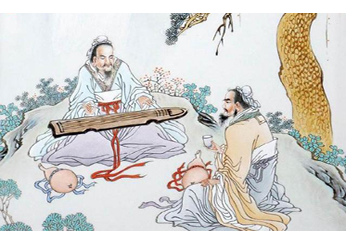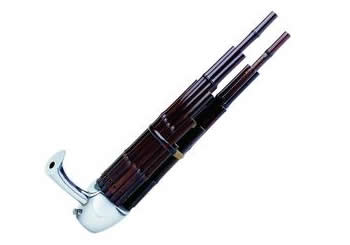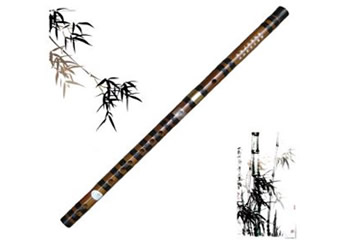Some common traditional Chinese musical instruments
The pipa lute originated in Central Asia and is an instrument of great virtuosic possibilities. It is the subject of many paintings and poems and has held a societal position similar to that of the guitar in Western culture. Currently, the erhu, or two-stringed fiddle, is the most popular instrument in China. It originated in the northern tribes and is available in many sizes and variations. Thisfiddle is the violin of the modern Chinese orchestra. The sanxian lute is a ban jo-like instrument that is used to accompany narrative singing. The yangqin is a many-stringed hammer dulcimer that originated in Persia. Its function is somewhat like that of the piano: it serves as either a solo instrument or an accompa nying instrument.
In the aerophone category, di or dizi side-blown flutes are the most numerous. The xiao end-blown flute is also a popular instrument. Perhaps the most exotic wind instrument is the sheng, a mouth organ that can produce many notes simultaneously. A popular folk wind instrument is the suona, a double-reed instrument that evolved from the Middle Eastern zurna. Because of recent archaeological discoveries, Chinese musicians have had a revived interest in the ancient bianzhong (bronze bell chimes) and bianqing (stone chimes). Variations of many Chinese musical instruments can be found in Japan, Korea, Vietnam, and Mongolia.





